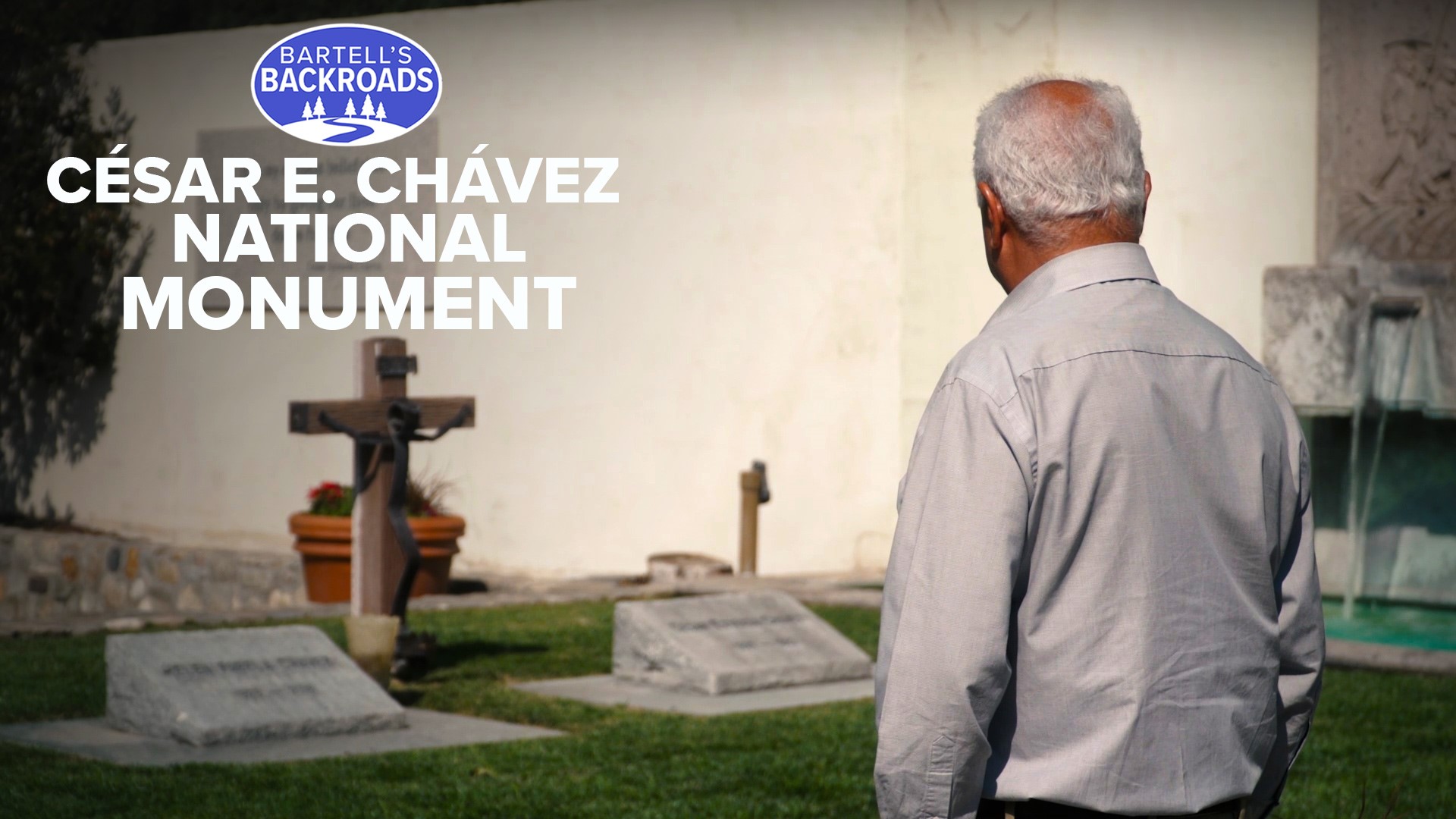KEENE, Calif. — Tucked between a set of railroad tracks and Highway 58 is a fountain. Below the fountain are two graves. The headstones are modest, and buried below the grass are César Chávez and his wife Helen Chávez, two of the greatest civil rights and labor activists in United States history.
The graves can be viewed by anyone at the César E. Chávez National Monument in Keene, Calif., but when Paul Chávez looks back at the life of dedication that his father Cezar Chávez gave to farm workers, he’s reminded of the simple reason his dad got into activism.
“He would say, 'I’m angry! I’m angry at the way our family was treated, lots of families were treated and I’ve got a score to settle'," Paul Chávez said.
The son of Mexican-American migrant farm laborers, César Chávez grew up in a life of poverty. At a young age, he learned people who work in the fields don’t have the same rights as everyone else.
“They weren’t given the right to bargain, they were excluded from social security, there was no unemployment insurance,” Paul said.
After serving time in the military, César Chávez married and got back into farm work and other manual labor jobs. Fed up with the way laborers were treated, he became a grassroots labor rights activist.
In 1962, with the support of his wife Helen, he formed the United Farm Workers of America.
“He always talked about non-violence being more powerful than violence,” Paul said.
Following the examples of Gandhi and the Reverend Dr. Martin Luther King Jr., César Chávez led farmworkers across California through a series of peaceful protests and strikes. He would later join with other labor activists like Dolores Huerta and Filipino labor group, the Agricultural Workers Organizing Committee.
“It was a universal message of fairness, but it was delivered by a person who wasn’t so different than the folks he was speaking to,” Paul said.
Before it was a national monument, the United Farm Workers of America would meet on Chávez’s land in Keene. The family called it "La Paz."
“This was a place where he could bring workers from all over and give them skills and the inspiration," Paul said.
César Chávez died in 1993 at the age of 66, but today, as you walk down the halls of the national monument, you will see the results of his inspiration. Images of his hunger strikes, his marches, and his connection to Bobby Kennedy and Dolores Huerta. You also will experience current-day inspirations, like those of Park Superintendent Ruben Andrade.
“I am living a dream just by working here,” Andrade said.
Andrade is also the son of farm workers and ever since he started working in the National Park Service, he wanted to honor César Chávez in a big way.
“I want to be the superintendent of a park that commemorated César Chávez,” Andrade said, whose dream came true in 2012 when former President Barack Obama proclaimed La Paz a national monument and named him the superintendent.
History continues on through the César Chávez Foundation, which helps farm workers with housing, education, economic development and, of course, preserving César Chávez’s legacy at the national monument.
“It was important to us because it took him from just being a hero to farm workers and Latinos, but it made him part of America's history,” Paul Chávez said.
ABC10: Watch, Download, Read
Watch more from ABC10
Locke, the first California town built by Chinese immigrants | Bartell's Backroads



















